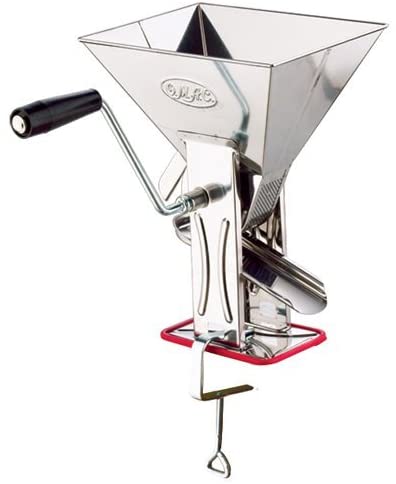Like many of you, I tend a vegetable garden in the Italian tradition with the goal of preserving the harvest, not merely consuming it fresh.
Planting seeds, transplanting seedlings, caging, staking, weeding, mulching, watering, and fertilizing even on a small scale is an all-consuming hobby. Combatting adverse weather, ruinous varmints, and voracious insects makes gardening more than a hobby – you become a Secretary of Defense.
Last year, squirrels took a liking to my still-green tomatoes and Butternut squash, leaving nothing for me but a thirst for revenge. At my wits end, I bought a $50 squirrel trap and bagged seven of the critters with their favorite bait – peanut butter. The ingenious trap preserved their lives but left me to decide their future. So, over the course of two weeks I transported seven of these “illegals” to parts unknown – to them, at least. This year, I bagged another two early in the season and spread copious amounts of red pepper seeds around the tomato plants. Soon, I happened to spot a third squirrel frantically rolling around a bed of grass clippings that I use for mulch. I figured he must have gotten some red pepper in his fur. As an experiment, I didn’t set a trap for him. Sure enough, the pepper may have worked, because he never returned. My 2-year counter insurgency program may have decimated the local squirrel population, for my tomato and squash production is back to normal.
The job now is preserving a bumper crop of Roma tomatoes. Let me explain that I am a modest gardener who is content to jar only half a dozen quarts (requiring 3 pounds of tomatoes each) of my own tomato puree. I have Italian American friends and relatives who consider six jars of puree as one Sunday’s worth of sauce. Their backyard gardens are totally inadequate to their industrial goals. So, they buy tomatoes by the bushel and produce hundreds of quarts of puree in a back-breaking, full-family weekend project. While I am in awe of such ambition and its industrial scale, the economics alludes me, especially as a can of crushed or pureed tomatoes can be bought on sale for only a dollar. Besides, these are not home-grown tomatoes – the fruit of your labor.

Preserving your own garden produce entails picking the ripened veggies – often under a scorching sun – then cleaning, cutting, and parboiling them for freezing. Tomatoes to be jarred, rather than frozen, need to be stewed and then skinned and seeded with a remarkable Italian contraption that produces a puree. Italian ingenuity and craftsmanship come together in this stainless steel, hand-cranked tomato processor (pictured). You can buy one for around $60 and it lasts for years, taking all kinds of abuse.
Beside my tomato processor and squirrel trap, another contraption that impresses me is the pasta maker – that compact machine with three stainless steel rollers that presses forth lasagna, spaghetti, or fettuccini from a lump of dough. Again, inexpensive Italian ingenuity that has been serving us for generations.
If you have ever watched the Chinese method of making lo mein by hand – a repetitive process of stretching and folding dough, using jump-rope motions, into one almost endless strand of noodle – you can see the cultural difference between the West and the East. Italians have their version of hand-crafted noodles using guitar strings, forks, and even thumbs, but our people scaled up noodle production with precision engineering on a massive scale. I’ve seen macaroni factories on TV that boggle the mind, pressing or extruding every pasta shape imaginable. You can literally eat a different pasta shape or type every day of the year without duplication. Italian genius knows no bounds whether in aero-space technology, surgical equipment, robotics, or automotive innovation.
Need more examples? Look what Italians have done with coffee – and they don’t even grow coffee beans! -JLM

Recent Comments